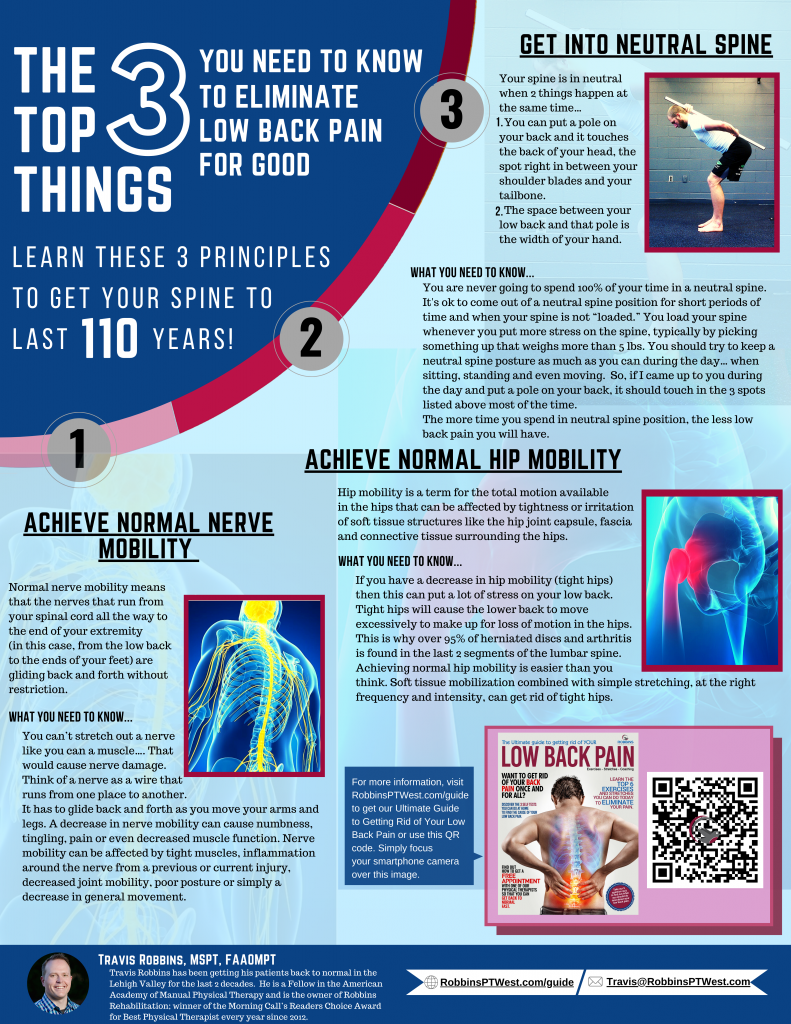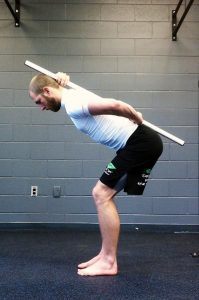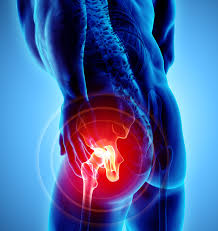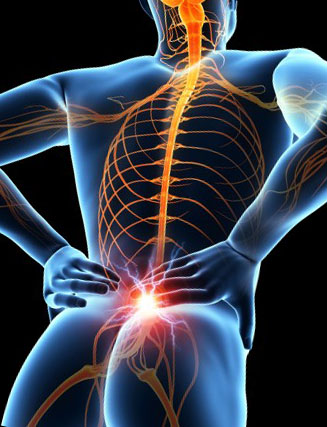
1. Get into Neutral Spine
Definition: Your spine is in neutral when 2 things happen at the same time….
- you can put a pole on your back and it touches the back of your head, the spot right in between your shoulder blades and your tailbone.
- The space between your low back and that pole is the width of your hand.

What you need to know…
- You are never going to spend 100% of your time in a neutral spine
- It’s ok to come out of a neutral spine position for short periods of time and when your spine is not “loaded.” You load your spine whenever you put more stress on the spine – typically by picking something up that weighs more than 5 lbs.
- You should try to keep a neutral spine posture as much as you can during the day… when sitting, standing and even moving. So, if I came up to you during the day and put a pole on your back, it should touch in the 3 spots listed above MOST of the time.
- The more time you spend in neutral spine position, the less low back pain you will have.
2. Achieve Normal Hip Mobility
Definition: Total motion available in the hips that can be affected by tightness/irritation of soft tissue structures like the hip joint capsule, fascia and connective tissue surrounding the hips and shortening of muscles surrounding the hips.

What you need to know…
- If you have a decrease in hip mobility (tight hips) then this can put a lot of stress on your low back.
- Tight hips will cause the lower back to move excessively to make up for loss of motion in the hips. This is why over 95% of herniated discs and arthritis is found in the last 2 segments of the lumbar spine
- Achieving normal hip mobility is easier than you think. Soft tissue mobilization combined with simple stretching, at the right frequency and intensity, can get rid of tight hips.
3.Achieve Normal Nerve mobility
Definition: Free movement of the nerves that run from your spinal cord all the way to the end of your extremity (in this case, from the spinal cord in the low back to the ends of your feet).

What you need to know…
- You can’t stretch out a nerve like you can a muscle…. Well, at least you wouldn’t want to. That would cause nerve damage. Think of a nerve as a wire that runs from one place to another. It has to move
- A decrease in nerve mobility can cause numbness, tingling, pain or even decreased muscle function (decrease in muscle strength or ability to activate)
- Nerve mobility can be affected by tight muscles, inflammation around the nerve from previous or current injury, decreased joint mobility, poor joint position (poor posture) or simply a decrease in general movement (you are not as physically active as you were when you were in your 20s).
Are you looking for more information and someone to tell you what is going on with your low back pain!? Come in for a free screen with one of our therapists.
It’s a 30 minute 1-on-1 appointment with a Physical Therapist where you get the following…
1. A DIAGNOSIS: Discover the cause of your pain so that you can attack the problem successfully.
2. A PROGNOSIS: Find out how long it will take to fix your back pain for good so you can get back to all the activities you used to do before your injury.
3. A PLAN: Your Physical Therapist will lay out a clear plan that outlines what will be required to get you back to normal.
All you need to do to get started is to call (610) 839 – 8764 and pick your time and location. We look forward to meeting you and getting you back to normal!

